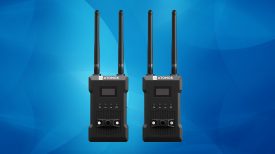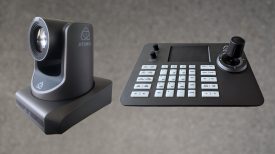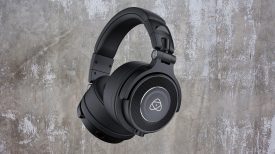The dilemma:
Can’t afford that Canon 17x Cine servo zoom? Frustrated that your 35mm lens doesn’t have the all-in-one reach of your old news lens? Like many shooters, I’ve always dreamed of being able to stick a 2/3 inch ENG lens onto a DSLR-sized camera and use it for run-and-gun shooting. There have been many solutions, but frankly until now none of them have really been capable of broadcast quality.
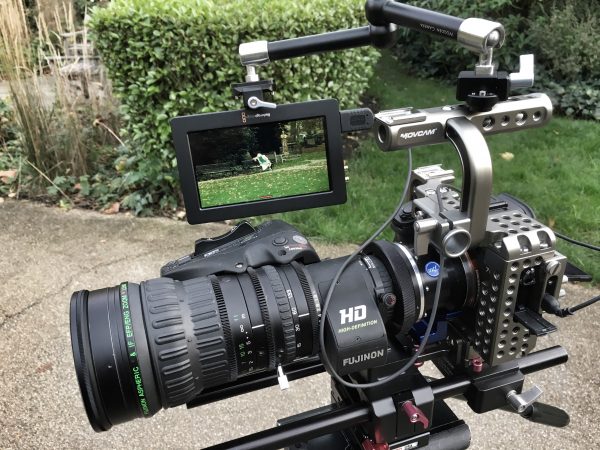
Sony don’t exactly shout about it, but hidden in the menu of the Sony a7R II is a feature known as Clear Image zoom. This is a digital zoom that intelligently allows you to crop into your image while maintaining 4K resolution for recording. In effect it becomes a 2x digital teleconverter. The result is a lot like the 2K centre scan mode on the FS5, F5/55, and soon the FS7 – except that it is recording 4K and not HD. The 4K image can also be recorded externally to an external recorder.
Drama shooters can stop reading right now. This is not a solution they are likely to need. But in the era of large sensor cameras, news and documentary shooters still occasionally need access to a wide ranging zoom without the super shallow depth of field.
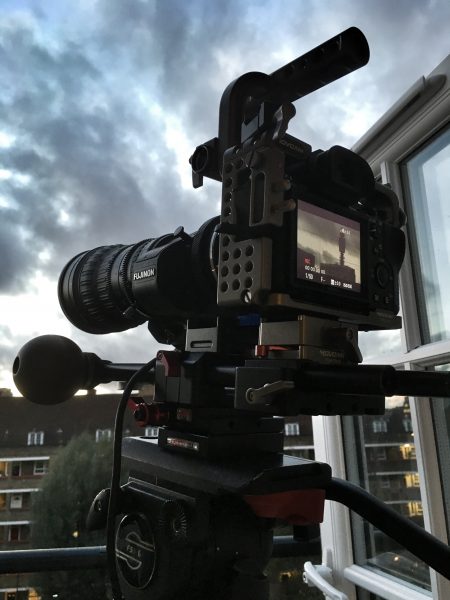
How it works:
To engage the Clear Image zoom you need to go into the camera’s menu and select the ‘zoom’ setting. Then you need to set it to the maximum 2x setting.
The magic happens when you combine it with MTF’s new 2/3 B4 to S16 E-mount optical adapter. The adapter has optics to expand the coverage of 2/3 lenses to cover a S16 sensor. Sony and others make similar ones for PL mount, but only MTF makes one in E-mount. The optics lose about 0.8 stops of light, but it’s a small sacrifice to allow you to use the ENG lenses on the tiny camera.
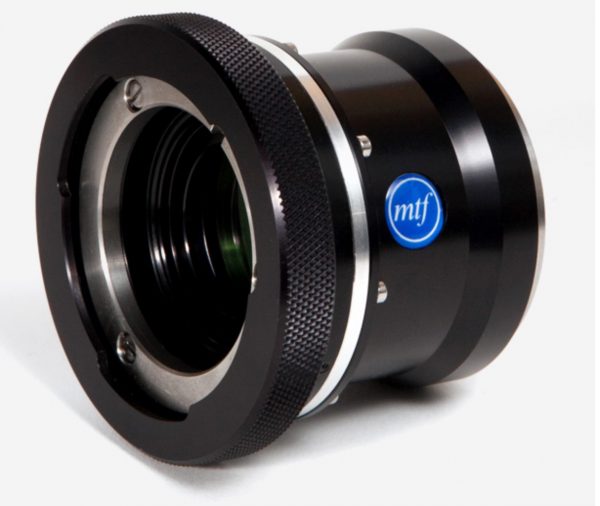
Setting the flange back adjustment correctly on most ENG lenses means images stay sharp from one end of the zoom to the other. Add a special cable from MTF that runs the ENG lens servo from any D-tap power source and you have powered zoom – I used a Swit BP-U type battery from my FS7.
Even though the resulting magnification level is similar to the 2K centre scan mode on the larger Sonys, the way in which the two actually get there is somewhat different. The FS and F5/55 cameras simply crop an area out of the centre of the S35 sensor and record it. This results in a mostly moire- and aliasing-free HD image which can be used either as a digital teleconverter with 35mm lenses, or as a way to use S16 and B4 lenses with the right adapters.
The 42 megapixel full frame a7R II, on the other hand, uses some neat tricks to record in 4K even when cropped. The huge number of pixels on its sensor is so huge that it has more of them than straight HD even when cropped 2x when running in S35 mode. My schoolboy maths says that it must still have just over 3 million pixels when zoomed to the maximum in Clear Image mode. The camera then intelligently upscales the cropped image internally using some electronic wizardry to create a 4K image.
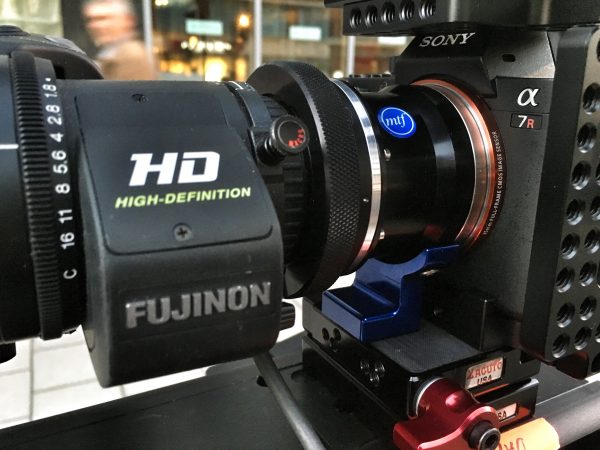
Of course, by using such an extreme crop of the sensor there is an obvious increase in the noise levels in the picture. Centre Scan mode on the FS and F5/55 cameras also exhibits this. But the a7R II results in low light are surprisingly good because of Sony’s newer backside illuminated chip technology. Strangely, I quite like the grain effect and it’s a bit like old Super16mm film. The ability to shoot in flat or S-Log formats with higher dynamic range brings an interesting look to 2/3 inch lens footage and it works well for some things.
After closely examining the results using this combination I don’t think they are near the image the camera produces shooting “true” 4K in its Super 35 mode. It is softer and less well-defined. But it is way better than any other solution I’ve seen for using B4 lenses on DSLRs or compact system cameras. In fact, when the 4K image is scaled back to HD, I would put it right up there against what the F5/55 or a good 2/3 HD news camera produces. It’s that good.
In the hand:
Ergonomically the a7R II with a B4 lens is quite an interesting combination. With lighter B4 lenses like my Fujinon 17x HD lens it is actually quite hand-holdable without any kind of shoulder rig, just using the built-in EVF. Triggering record is a bit of a pain as you need to do that on the camera body and not with the VTR trigger on the lens – maybe someone can make a solution that allows the button to work.
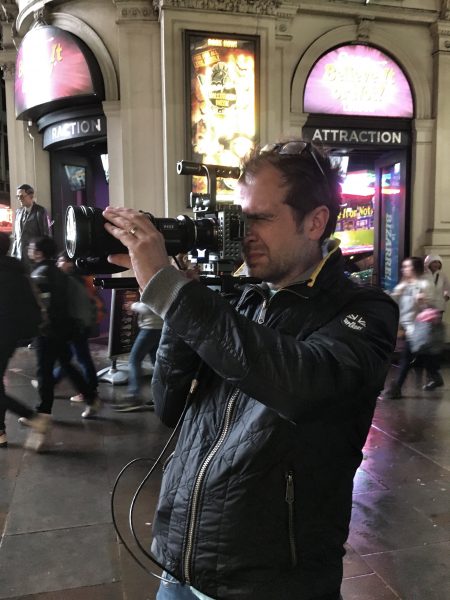
Newsshooter contributor Simon Glass shot a quick test with it completely handheld. The idea was to get a look that was similar to what you could achieve with a regular news camera. If anything the result is slightly better as the low light performance of the a7R II is very good. Shooting in the centre of London with the setup didn’t attract any undue attention. For the right kind of news or documentary shoot it could be just the ticket.
You could also add a shoulder rig like the Zacuto Recoil and add an external EVF. Adding Sony’s XLR-K1M or K2M provides XLR audio connections. These would turn the camera into something much more akin to a traditional news camera, but still a lot lighter.
Filters:
One thing that is missing with the a7R II combination is any kind of built-in neutral density filter. I used an 82mm Genus variable ND on the Fujinon lens. Larger 2/3 lenses will likely need a mattebox and filters. Like all variable ND filters there was some softening of the image at the longer and wider reaches of the lens, but overall I found it acceptable.
Downsides:
One annoying thing is that the camera does not remember the Clear Image zoom setting when you turn it off or change battery. You need to go back and set it up again each time you power on. Thankfully, you can assign the zoom function to a custom button to speed up turning it on.
Used the right way the combination is capable of some interesting results. That said, I found the combination had slightly soft corners and overall loss of detail at the widest apertures. The MTF adapter is known to have these side effects and the variable ND filter probably worsens them. You can see this in some of the shots towards the end of my test video.
If you are shooting documentary or news and you can keep your subject from dwelling near the very edge of frame most of the time, the edge sharpness is less of an issue. Otherwise, the solution is to stop the lens down a little. By about f4 or 5.6 I found the result were more uniform. You can certainly work with the setup, but you do need to pay reasonably close attention to make sure things stay sharp.
Another disadvantage is that for the setup to work well you really need to shoot 4K. If you set the camera to HD mode the results are soft and full of aliasing and moire. I have no idea why the difference is so marked, but it is there none the less. Shooting 4K internally and outputting 1080 over HDMI to an external recorder is slightly better, but the results are a little soft and look very much like something an older DSLR like the 5D mkII produces.
To get HD you really need to edit in 4K on a HD timeline – something that probably isn’t going to work in many fast-paced news workflows. If you do edit yourself and have a speedy computer then it shouldn’t be a problem.
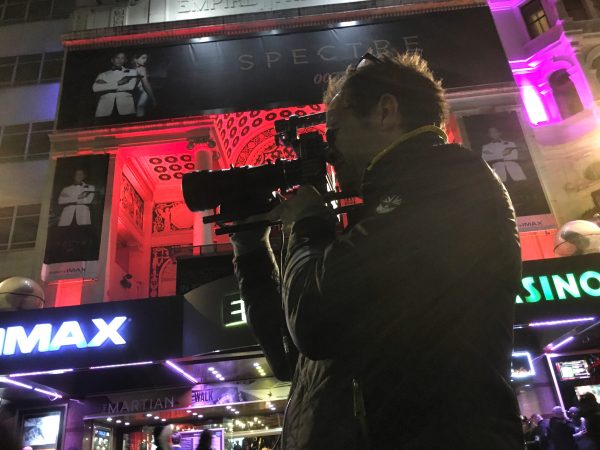
So why bother, it all sounds a little complicated?
So why not just use a news camera? You can after all just throw one on your shoulder and go. Good balance, easy controls, multiple connections and built-in neutral density filters make them ideal for many purposes. The a7R II combo, on the other hand, is much smaller. Having the option to use something lighter and smaller can be a godsend for some shoots. You also gain S-Log shooting and higher dynamic range; plus, you don’t have to invest in a dedicated news camera.
This solution isn’t really about getting the absolute best technical quality. It’s about creating something that works well in fast-moving real world situations. If you can afford the Canon 17x cine servo and a C300, F5 or FS7 then you probably don’t need this. It is, however, a very useful solution for doc shooters on a budget. It could also work well as a 2/3 lens B-cam to match the F5 or FS7.
Clearly, at £1500, the MTF adapter isn’t cheap. Add the price of a B4 lens and an a7R II and it costs a lot more than something like a RX10 II or Canon XC10 – which both have a long zoom range and shallower depth of field.
But if you already own a good B4 lens and are considering an a7R II anyway, then it is a good option. It is the first DSLR/CSC B4 to large sensor solution that I think really works well enough to use.
For me it is a piece of kit worth having in the arsenal because I long since got rid of my 2/3 broadcast camera and I don’t intend buying another one. The a7R II and MTF adapter allow me to do the same kind of shots if I really need to.



